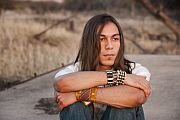
WEDNESDAY, Sept. 30, 2015 (HealthDay News) — A new federal report on suicide finds that young adult Native Americans continue to be at a much higher risk of killing themselves than other racial or ethnic groups in the United States.
From 2012-2013, the suicide rate was 34 per 100,000 among male American Indians and Alaskan Natives aged 18 to 24. That’s higher than white males, blacks, Hispanics and Asian/Pacific Islanders, the report found.
The rate was 10 per 100,000 for female American Indians and Alaskan Natives, nearly twice the rate found among white females. The researchers added that a previous study suggested that death rates among Native Americans may be under-reported by as much as 30 percent.
Experts who study suicide in Native Americans say there are many potential explanations for the higher suicide rates. But proven strategies to reduce them are lacking.
“There isn’t a lot of research into what works,” said Jacque Gray, associate director of the University of North Dakota’s Center for Rural Health.
Still, she said, “public awareness is important, as is identifying the young people who are falling through the cracks and finding ways to link with them so they have a sense of connection, that someone cares.”
The report, released Sept. 30 by the U.S. National Center for Health Statistics, compares suicide rates among those aged 18 to 24 in various racial and ethnic groups. Native Americans ranked the highest overall, at 23 suicides per 100,000 people, followed by whites (15), Asians and blacks (about nine), and Hispanics (just over eight).
The most remarkable gap separated Native American women (10 suicides per 100,000) from the other groups (5.5 for whites, five for Asians, and three for blacks and Hispanics).
David Patterson is an assistant professor of social work at Washington University in St. Louis who has long studied issues around Native American health. He said suicide has been a decades-long problem for this group. At the same time, they’ve faced low rankings on scales of health and wellness, with high levels of problems such as diabetes, obesity and mental health conditions, he added.
Native Americans as a whole suffer from tremendous poverty, which Patterson calls the root of the suicide problem. While the upswing in the economy has boosted much of the country, Indian reservations — where many, but hardly all, Native Americans live — have not benefited as much. Their unemployment rates have stubbornly remained above those of other racial groups.
“We have young people who live on reservations who really have no hope of getting a job,” Patterson said. “To have success, you have to leave all of your people and go into the world.”
If they stay on reservations, Native Americans may find themselves in places where guns are common. According to the report, young adult Native Americans used firearms 41 percent of the time to kill themselves, a higher rate than Hispanics (36 percent) or Asians (27 percent).
“In most of those areas, people hunt and guns are readily accessible,” Gray said. “In Alaska, there’s a lot of subsistence living, people living off the land like their ancestors. Hunting for food, deer, elk, buffalo and other small animals is just a part of the culture. Everybody has a gun.”
Suffocation — often by hanging — accounted for almost half of suicides among the Native Americans, the highest percentage of any racial or ethnic group. Perhaps because many live in reservations, suicide by falling — as in jumping off a tall building — was much less common among Native Americans.
The economy isn’t the only possible factor behind the high suicide rate. Native Americans also suffer from bullying, both face-to-face and via the Internet, Gray said.
In addition, “there’s a lack of an identity,” she said. “Natives have lost spirituality, their land, their culture. A lot of our youth don’t really have any cultural identity as to who they are. They start taking on gang identities and other identities, and end up with an increase in violence.”
What to do? One approach is to train people in the community to identify signs of trouble in young adults. However, Gray said, “we’re not really seeing it make an impact. The ones committing suicide often aren’t connected. They may have dropped out of school, they may not be working anywhere. They aren’t anywhere where they would interact with the people who have been through the training.”
To make matters more complicated, it’s difficult to use research to figure out if a prevention strategy is working, Washington University’s Patterson said.
Still, some Native American communities try to reconnect young people with Indian tradition with an eye toward boosting their pride and promoting “self-healing,” Patterson said. However, he said, “I don’t know how effective that is.”
More information
For more about the suicide problem among Native Americans, try the Suicide Prevention Resource Center.
Copyright © 2025 HealthDay. All rights reserved.

